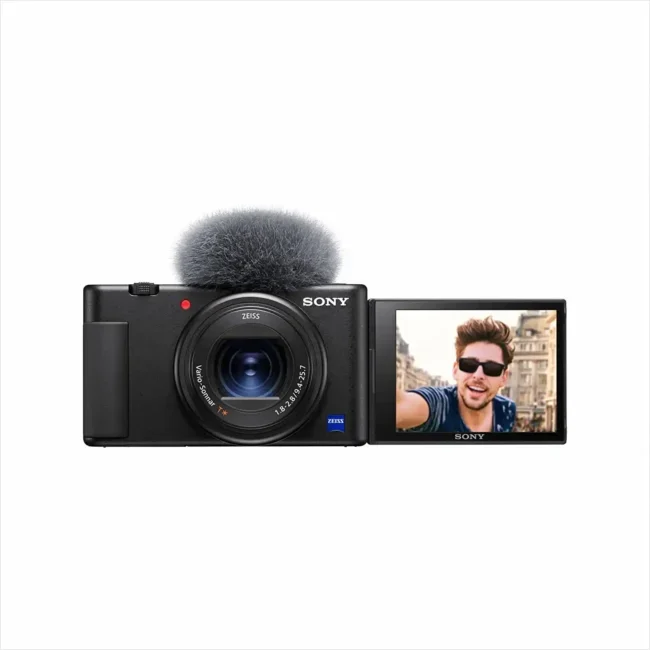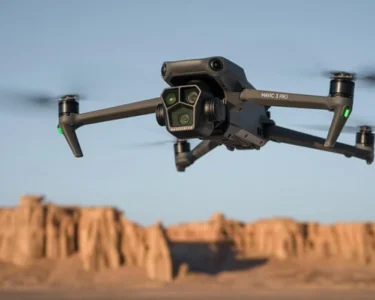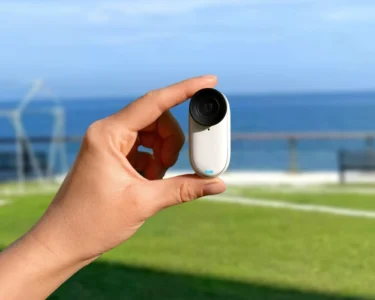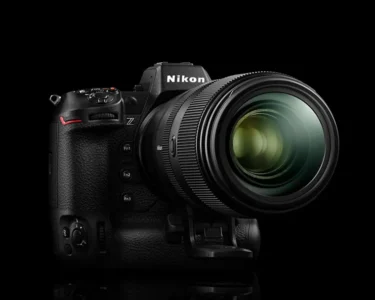Physical Attributes:
When it comes to dimensions and weight, the ZV-E10 stands out as the largest and heaviest among the three, measuring 115 x 64 x 45mm and weighing 343g. In contrast, the ZV-1F and ZV-1 are more compact, with the ZV-1F being slightly lighter at 106 x 60 x 46mm and 303g, while the ZV-1 measures 105 x 69 x 44mm and weighs 294g. All cameras feature fully articulated flip screens for convenient self-capture and 3″ LCD touchscreens for intuitive operation. Notably, none of the cameras come with an electronic viewfinder.
Shoe & Flash:
Both the ZV-E10 and ZV-1 include built-in flashes and hot shoe features, offering versatility for content creation. However, the ZV-1F lacks a built-in flash and only features a cold shoe, which aligns with its budget-friendly positioning.
Battery Life:
Battery performance varies slightly among the models. The ZV-E10 utilizes an NP-FW50 battery, offering approximately 80 minutes of video recording or 440 shots. On the other hand, the ZV-1F and ZV-1 use the NP-BZ1 battery, with the ZV-1F providing 60 minutes of video recording or 360 shots and the ZV-1 offering around 45 minutes of video recording or 260 shots.
Image Sensor & Display:
Both the ZV-1 and ZV-1F feature a 20.1 MP 1″ Exmor RS CMOS image sensor, while the ZV-E10 boasts a larger 24.2 MP APS-C Exmor CMOS sensor, providing superior imaging capabilities. All cameras sport 3″ LCD touchscreens for easy navigation and monitoring during recording.
Camera Lenses:
The ZV-E10 stands out as the only interchangeable lens camera among the three, offering compatibility with Sony E-Mount lenses. It comes with a 16-50mm standard zoom lens, providing flexibility for various shooting scenarios. In contrast, the ZV-1 and ZV-1F feature fixed lenses. The ZV-1 incorporates a ZEISS Vario-Sonnar T* zoom lens with a focal length range of 24-70mm, while the ZV-1F utilizes a fixed 20mm prime lens, offering a wider field of view ideal for vlogging.
Image Stabilization & Focus:
The ZV-E10 and ZV-1 rely on digital/electronic image stabilization (EIS), while the ZV-1 incorporates optical and electronic image stabilization hybrid for smoother footage. However, the ZV-1F lacks mechanical stabilization features, relying solely on digital stabilization, potentially compromising image quality. All cameras feature a high number of autofocus points for accurate subject tracking and include advanced features like Product Showcase mode and Background Defocuser for enhanced creativity.
Photography Features:
While all three cameras excel in video recording for vlogging and content creation, they also offer decent still photography capabilities. The ZV-E10, with its larger sensor, provides higher resolution and detail, making it suitable for photography enthusiasts. However, the ZV-1F and ZV-1 offer faster burst speeds, with the ZV-1 leading at 24fps, making it ideal for capturing fast-moving subjects.
Conclusion:
Each Sony vlogging camera caters to different user preferences and budgets, offering a range of features tailored to content creators. The ZV-E10 appeals to those seeking interchangeable lens capabilities and superior imaging quality, while the ZV-1F provides a budget-friendly option with essential features for vlogging. The ZV-1 strikes a balance between portability, performance, and affordability, making it a versatile choice for a wide range of users. Ultimately, the best camera depends on individual needs and priorities, whether it be image quality, portability, or specific features for content creation.








